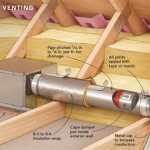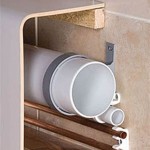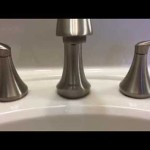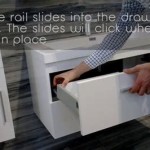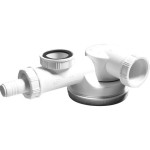Bathroom Sink Overflow Hole Leaking: Causes and Solutions
A leaking bathroom sink overflow hole can be a frustrating and messy problem. The constant dripping can create a nuisance, damage your bathroom fixtures, and even lead to mold growth. Understanding the reasons behind this leakage is crucial to effectively address it. This article explores common causes for a leaking overflow hole and provides practical solutions for resolving the issue.
1. Clogged Overflow Hole
The most common cause for a leaking bathroom sink overflow hole is a simple clog. Over time, debris like hair, soap scum, and toothpaste can accumulate in the overflow hole, blocking the drain and causing water to back up. This blockage can then lead to water leaking out of the overflow hole when the sink is filled.
To resolve a clogged overflow hole, you can try the following steps:
- Use a wire coat hanger or a small plumbing snake to try and dislodge the clog.
- Pour a solution of baking soda and vinegar down the drain to dissolve any organic matter.
- Use a plunger to create suction and force the clog out of the drain.
If these methods fail, you may need to remove the overflow plate and manually clean the hole. This typically involves unscrewing the plate and using a small tool, such as a pair of pliers, to remove the blockage.
2. Damaged Overflow Plate or Gasket
Another possible cause for a leaking overflow hole is a damaged overflow plate or gasket. The overflow plate is the small cover that sits over the hole, while the gasket is a rubber seal that prevents water from leaking out. Over time, these components can become worn, cracked, or lose their ability to seal properly.
To address this issue, you will need to replace the damaged overflow plate or gasket. This typically involves:
- Unscrewing the overflow plate from the sink.
- Removing the old gasket and replacing it with a new one.
- Reinstalling the overflow plate and tightening it securely.
It is essential to ensure that the new gasket is compatible with the overflow plate and the sink. You can find replacement parts at most hardware stores.
3. Loose or Cracked Sink Pipes
In some cases, a leaking overflow hole can be a symptom of a more serious problem, such as loose or cracked pipes. If the pipes that connect to the overflow hole have become damaged or loosened over time, water can leak out. This issue is often accompanied by other plumbing problems, such as low water pressure or slow drainage.
Addressing this issue requires a professional plumber. They will be able to inspect the pipes, identify any damage, and perform the necessary repairs. This may involve replacing damaged sections of pipe, tightening connections, or even re-piping the entire system.
4. Improper Installation
Occasionally, a leaking overflow hole can be attributed to improper installation during the initial construction of the bathroom sink. If the overflow plate was not installed correctly or the gasket was not properly sealed, water may leak out.
If you suspect improper installation, it is recommended to contact a qualified plumber. They can assess the situation and determine if any modifications are required. This might involve re-installing the overflow plate, replacing the gasket, or even re-doing the entire installation.

Loose And Leaking Plastic Bathroom Sink Drain Repair

Fix For Smelly Sink So Ready A New House Bathroom Drain Cleaning Drains

How To Clean A Bathroom Sink Overflow Hole

Bathroom Sink Drain Leaking Around Threads Premier Plumbing Inc

Finding Leaks At Sinks Professional Engineering Inspections Inc

How An Overflow Bathroom Sink Works Why This Is Very Good

How To Fix Bathroom Sink Drain Leaks Underneath Gasket Threads Solved

6 Simple Steps To Clean Sink Overflow Pipe Pro Tips
Bathroom Sink Leaking Help Please Diy Home Improvement Forum

Keeney 1 4 In Push On Bathroom Sink Drain Without Overflow Brushed Nickel K820 76bn The Home Depot
Related Posts

